Abstract
We used multiple conditional discriminations to study the inferential abilities of pigeons. Using a five-term stimulus series, pigeons were trained to respond differentially to four overlapping pairs of concurrently presented stimuli: A+ B-, B+ C-, C+ D-, and D+ E-, where plus and minus indicate the stimulus associated with reinforcement and extinction, respectively. Transitive inference in such situations has been defined as a preference for Stimulus B over Stimulus D in a transfer test. We measured this and other untrained preferences (A vs. C, A vs. D, B vs. E, etc.) during nonreinforced test trials. In three experiments using a novel, rapid training procedure (termed autorun), we attempted to identify the necessary and sufficient conditions for transitive inference. We used two versions of autorun: response-based, in which the subject was repeatedly presented with the least well-discriminated stimulus pair; and time-based, in which the subject was repeatedly presented with the least-experienced stimulus pair. In Experiment 1, using response-based autorun, we showed that subjects learned the four stimulus pairs faster than, but at a level comparable to, a previous study on transitive inference in pigeons (Fersen, Wynne, Delius, & Staddon, 1991), but our animals failed to show transitive inference. Experiments 2 and 3 compared time- and response-based autorun. Discrimination performance was maintained, but transitive inference was observed only on the second exposure to the response-based procedure. These results show that inferential behavior in pigeons is not a reliable concomitant of good performance on a series of overlapping discriminations. The necessary and sufficient conditions for transitive inference in pigeons remain to be fully defined.
Full text
PDF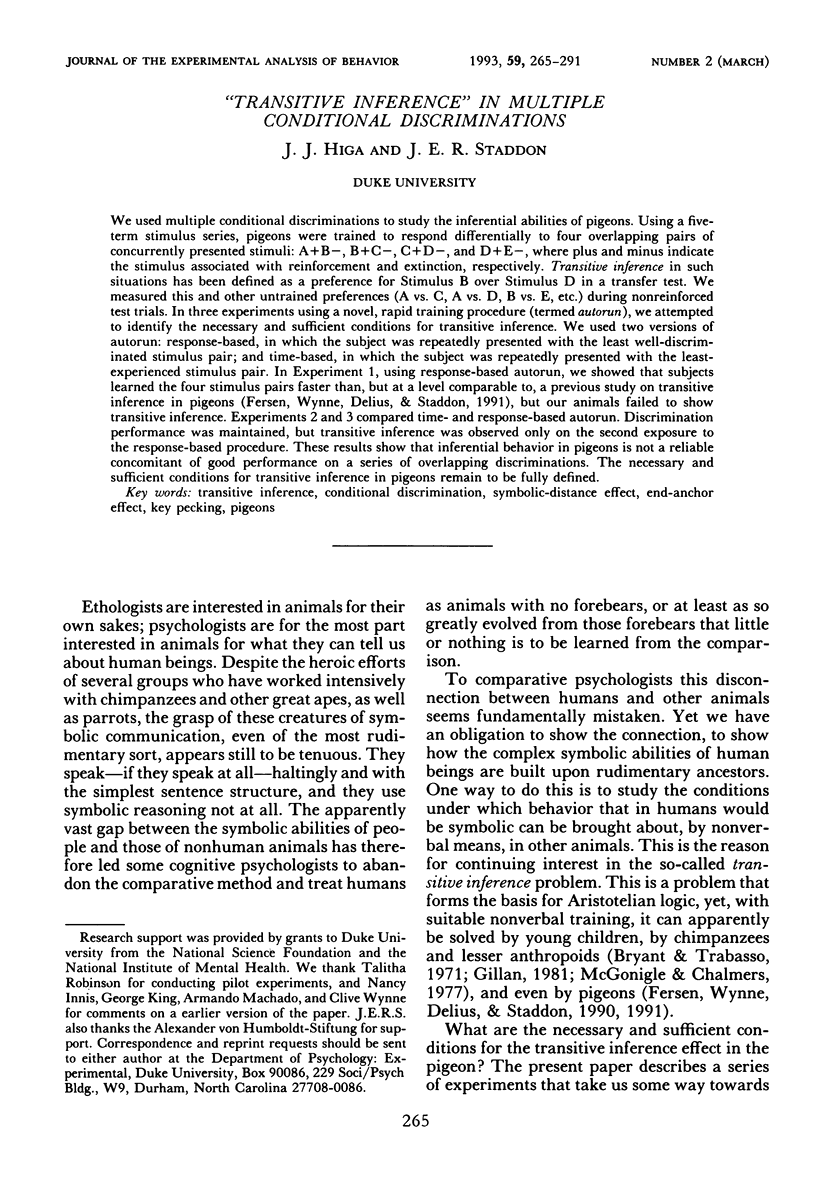
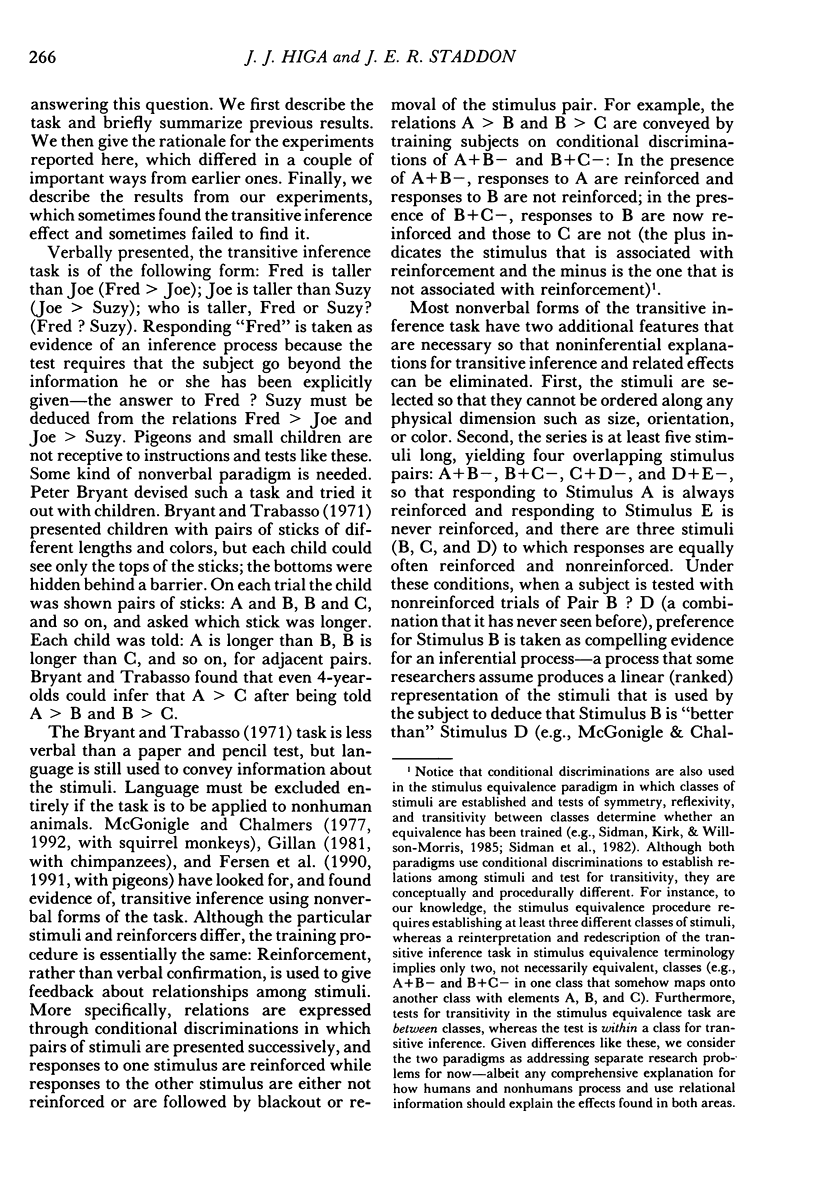

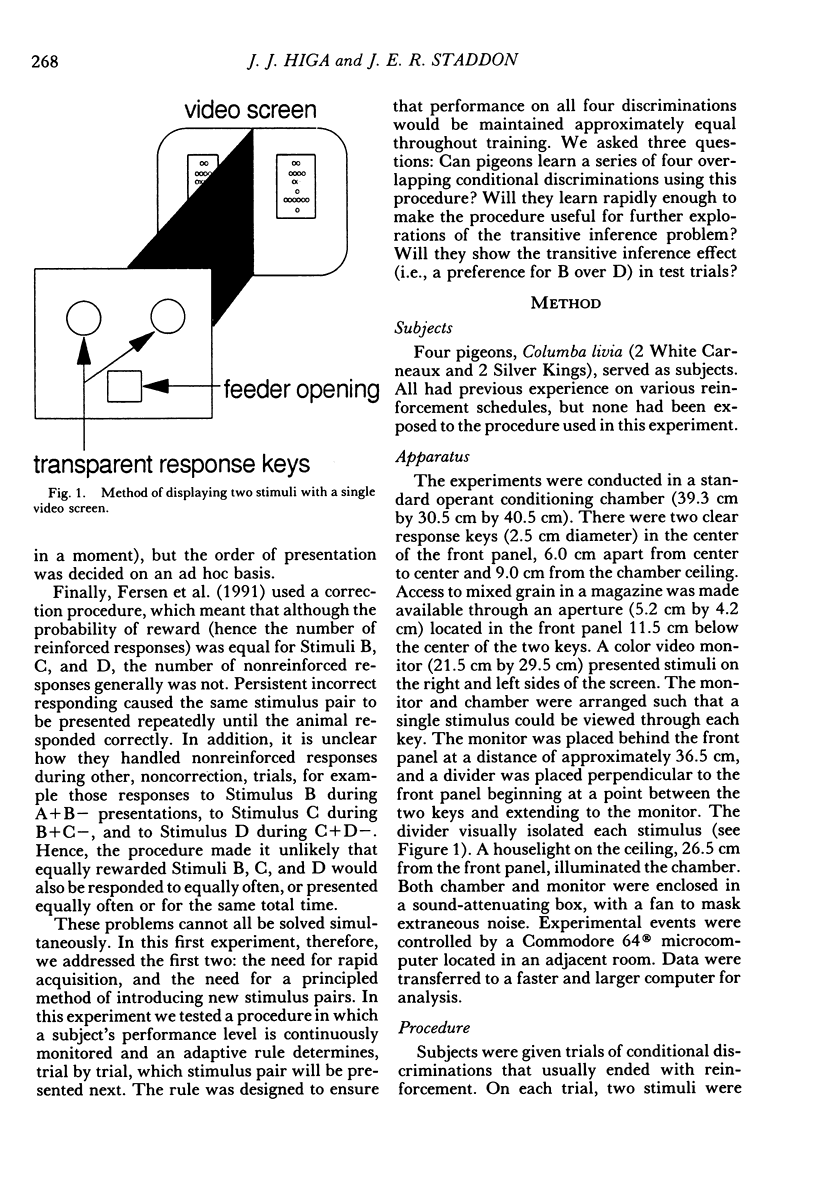
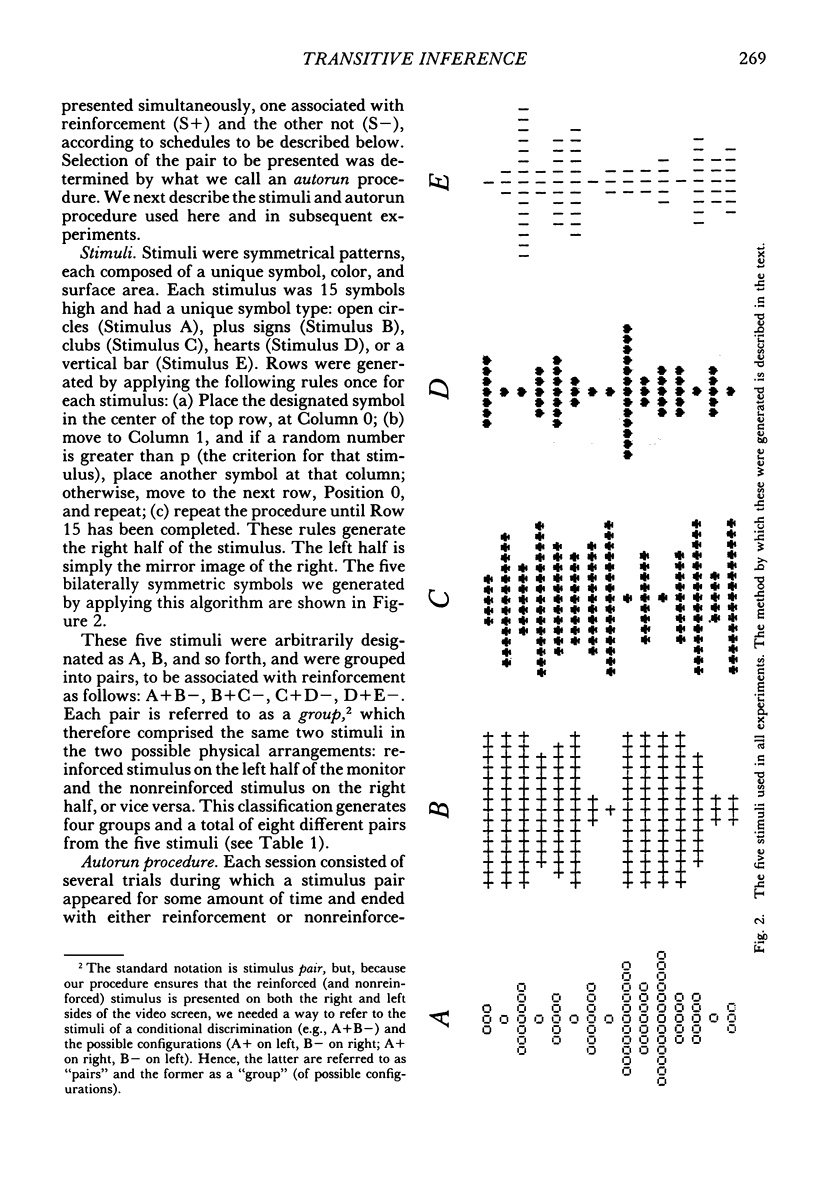
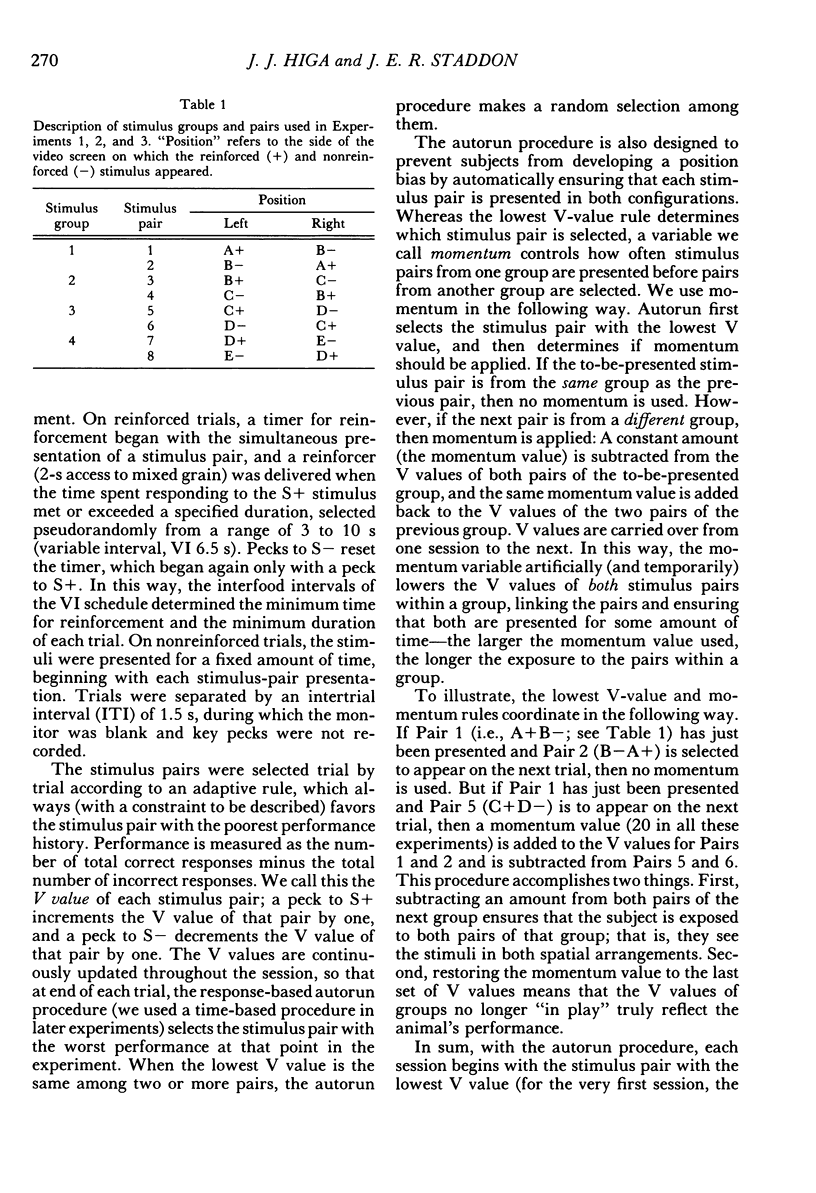
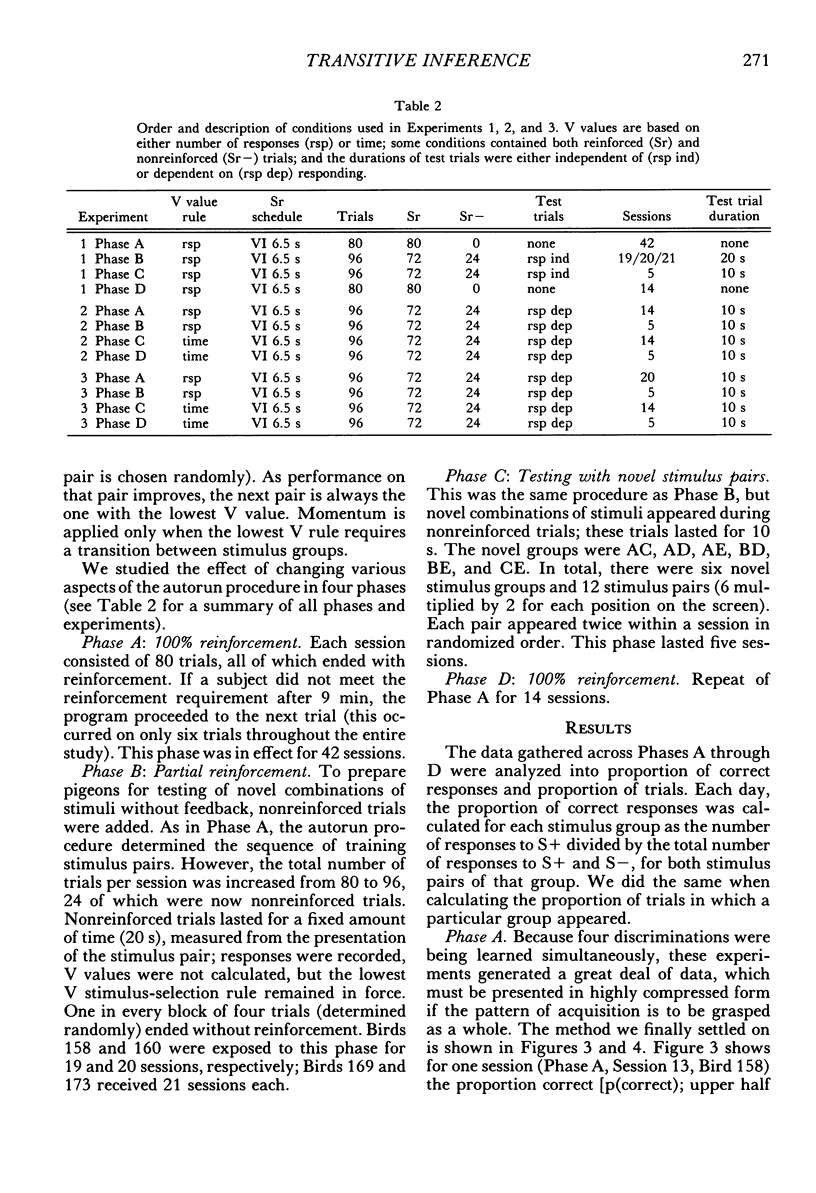
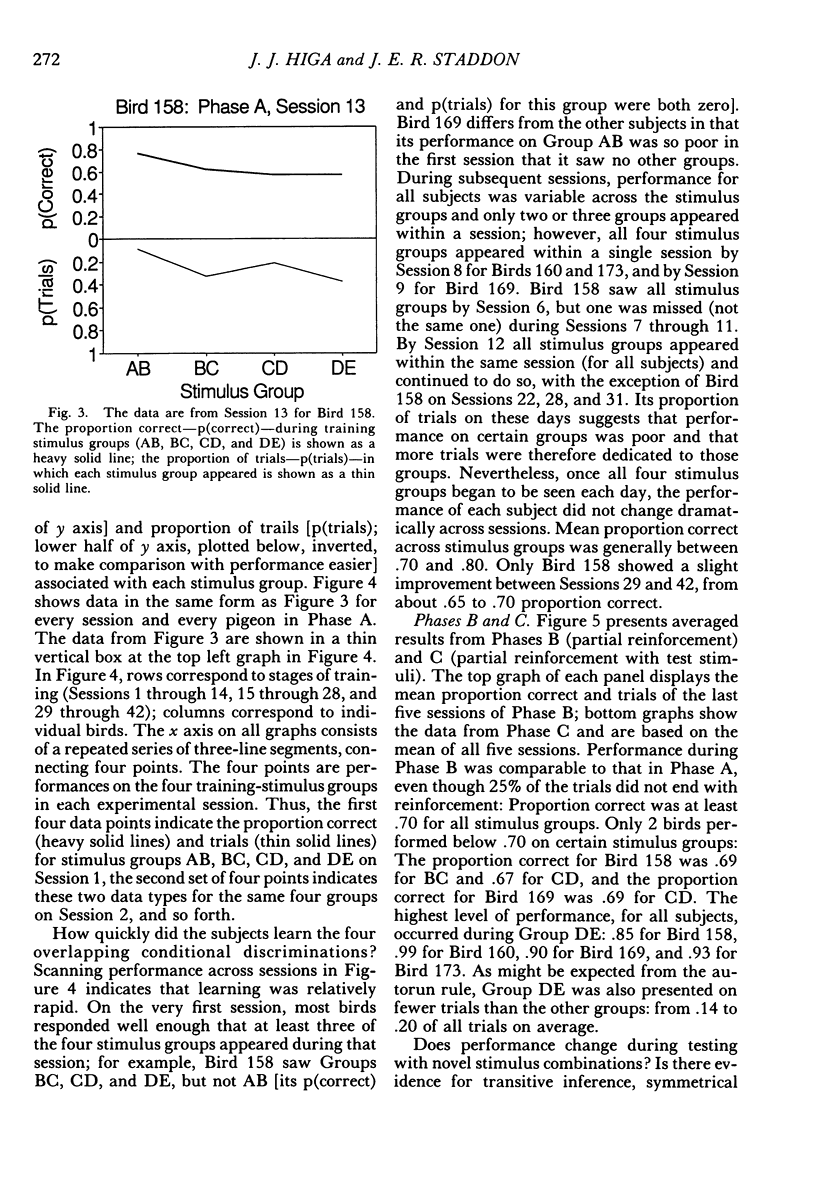
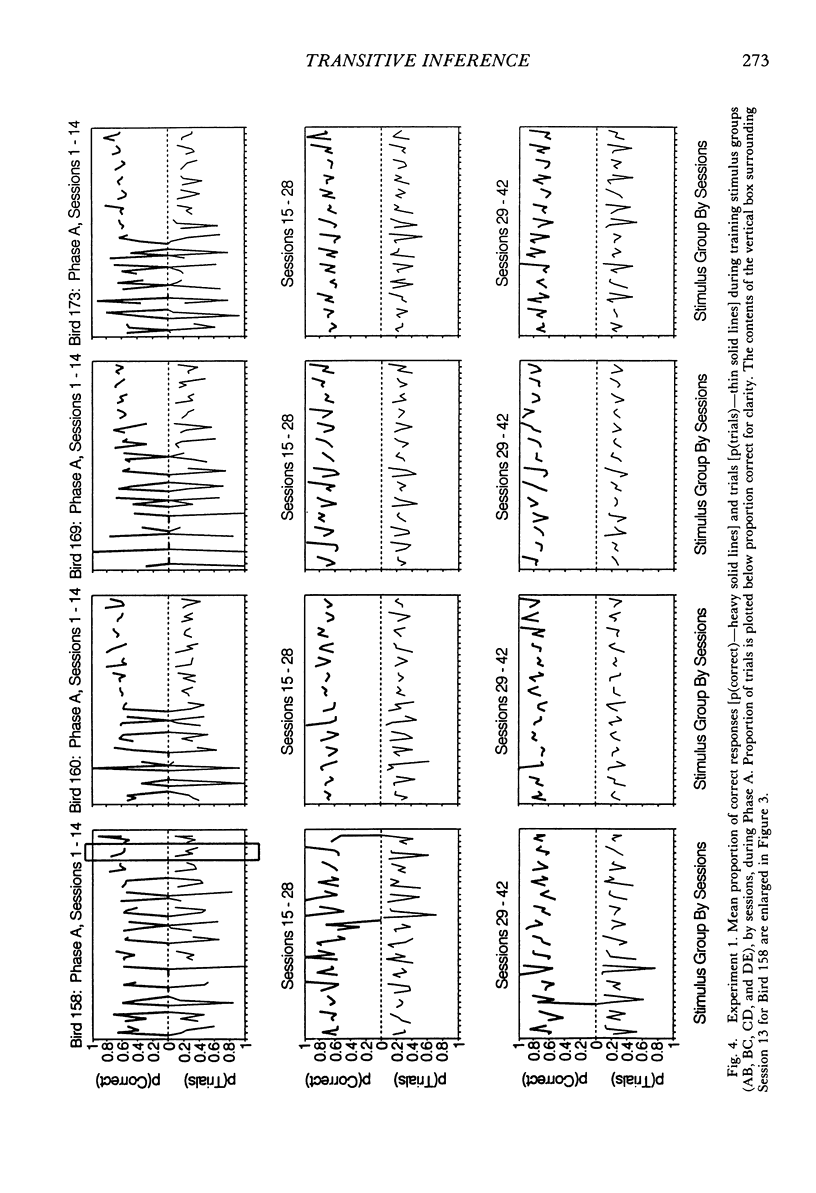
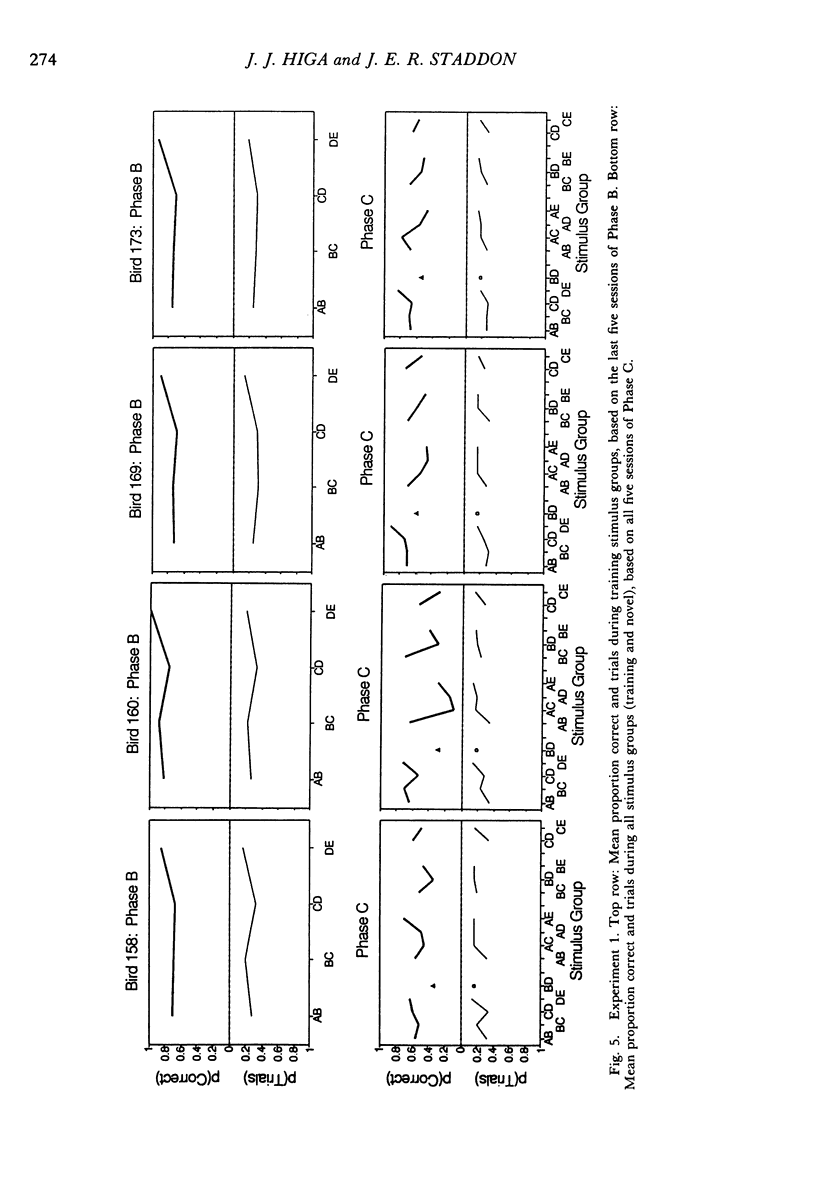
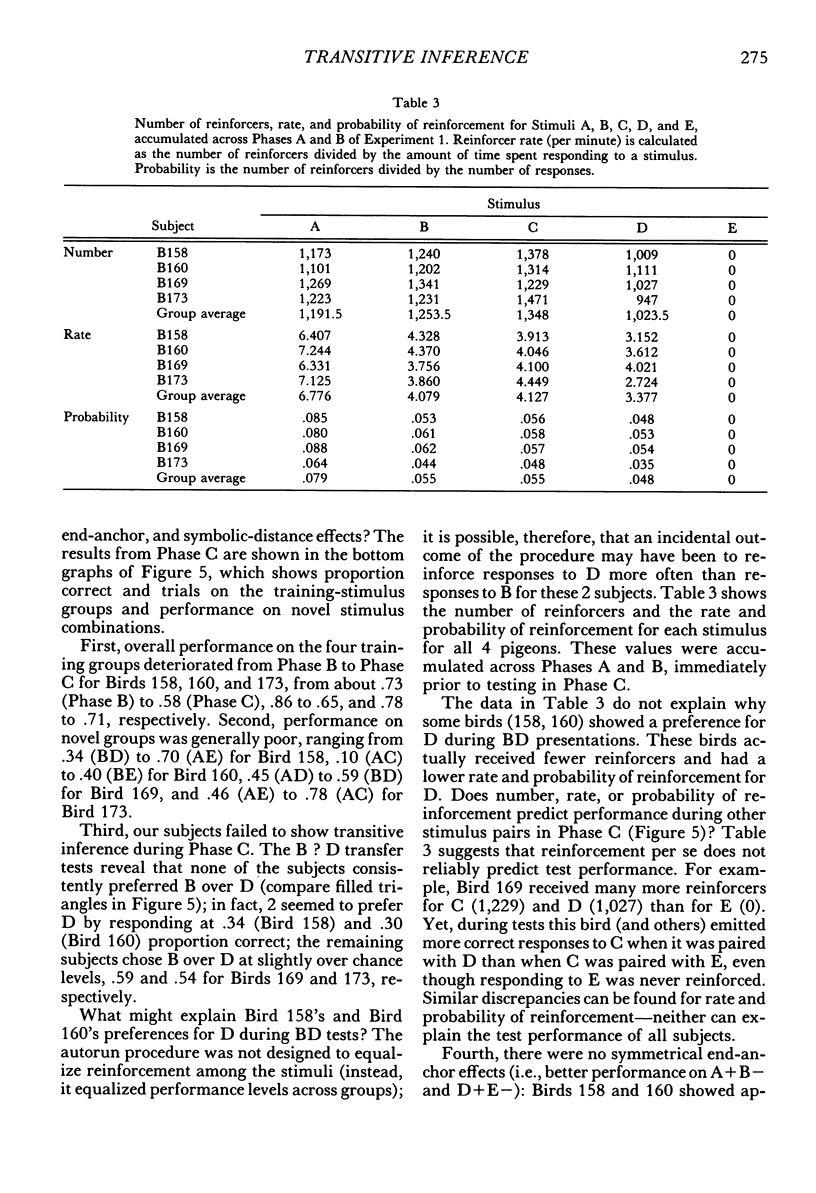
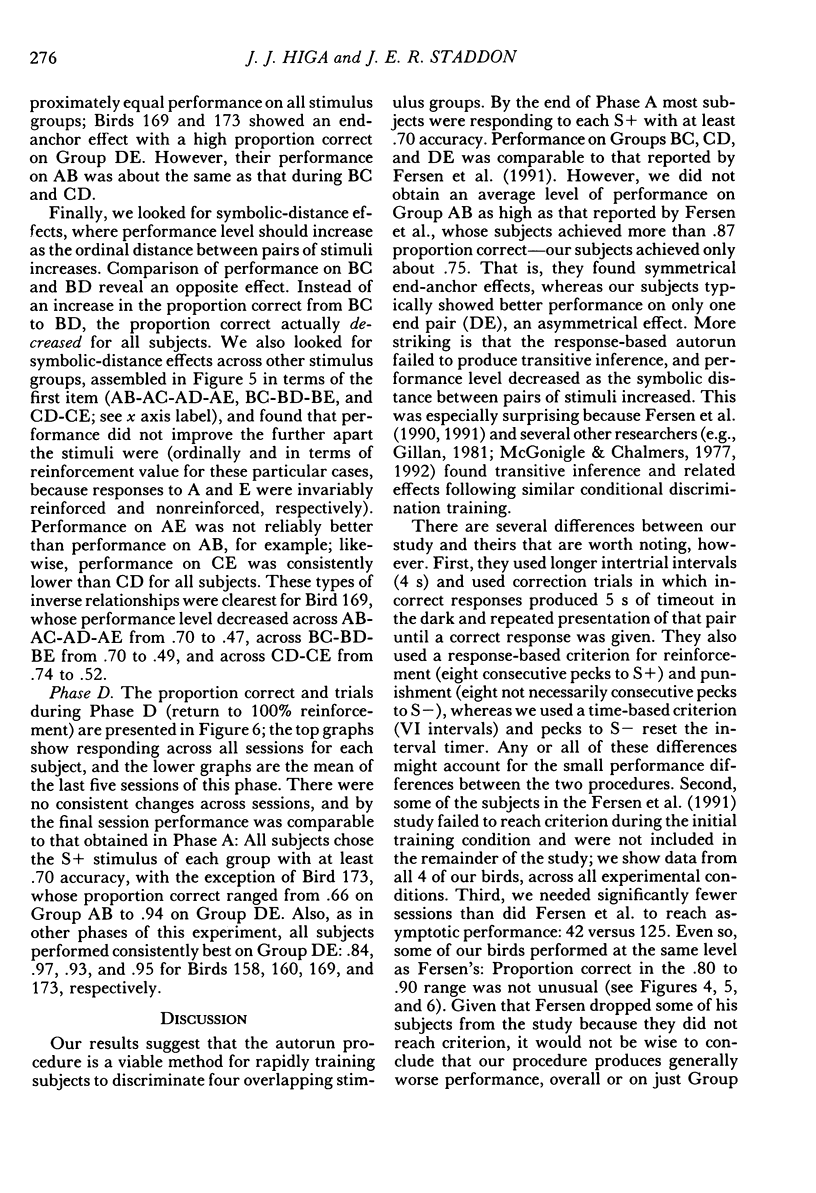
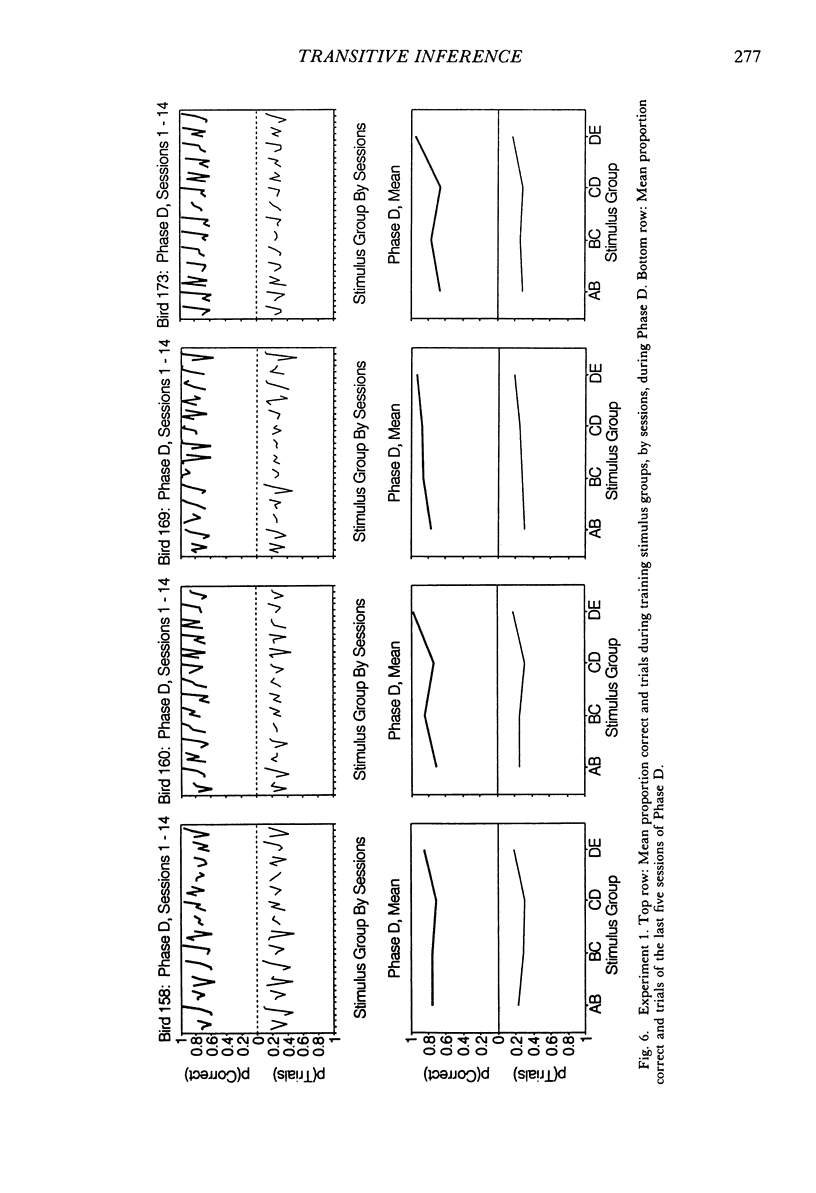
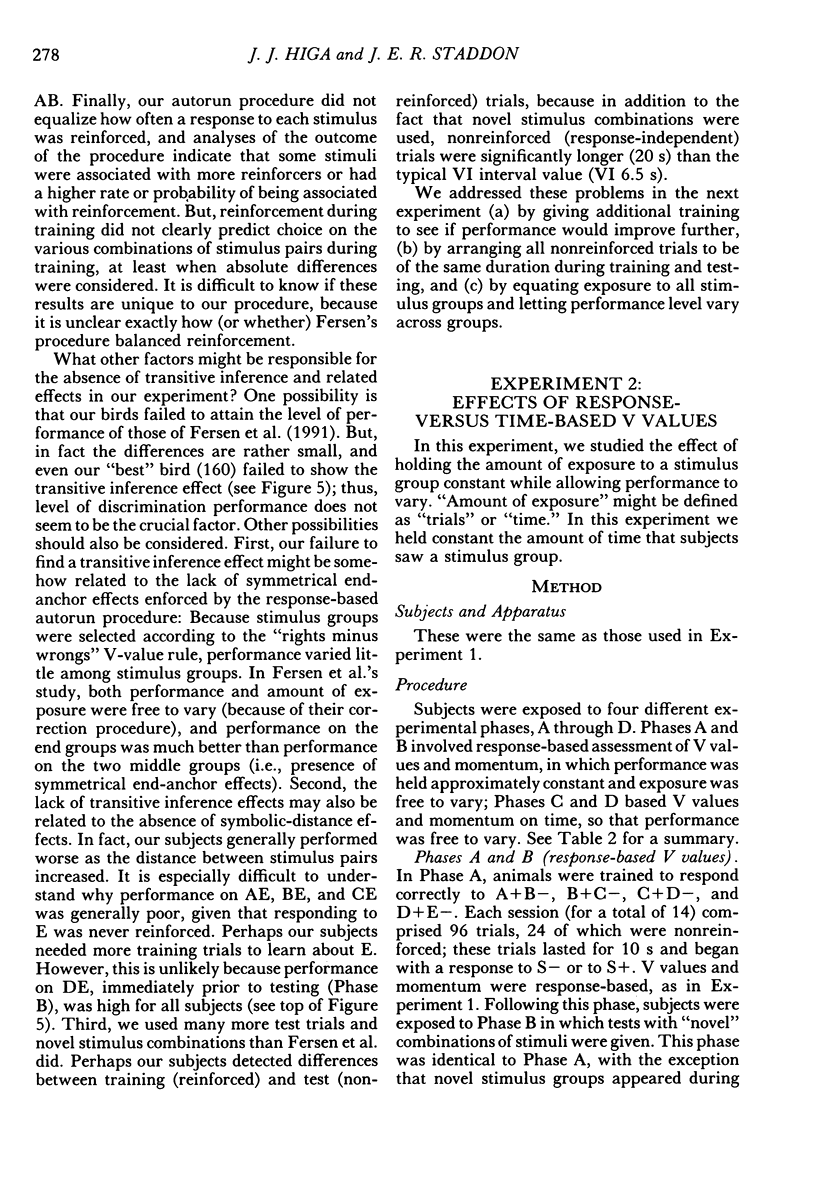
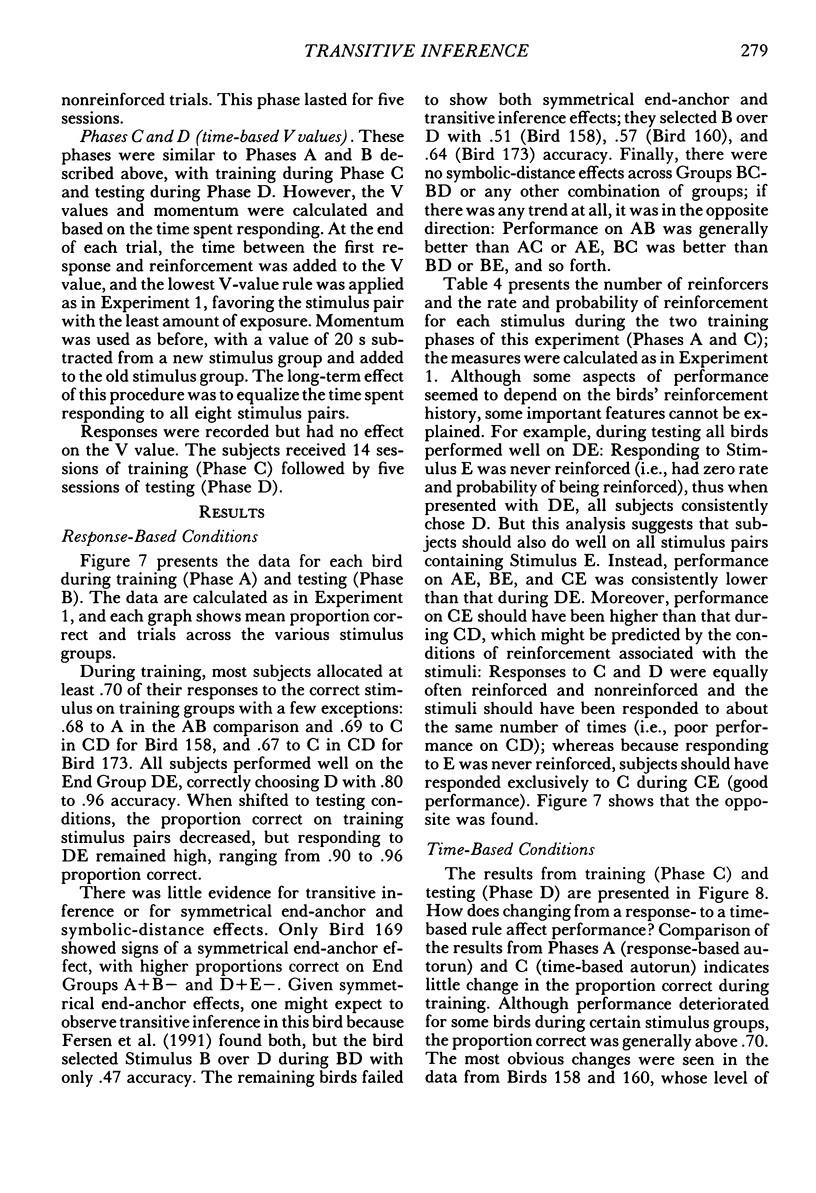
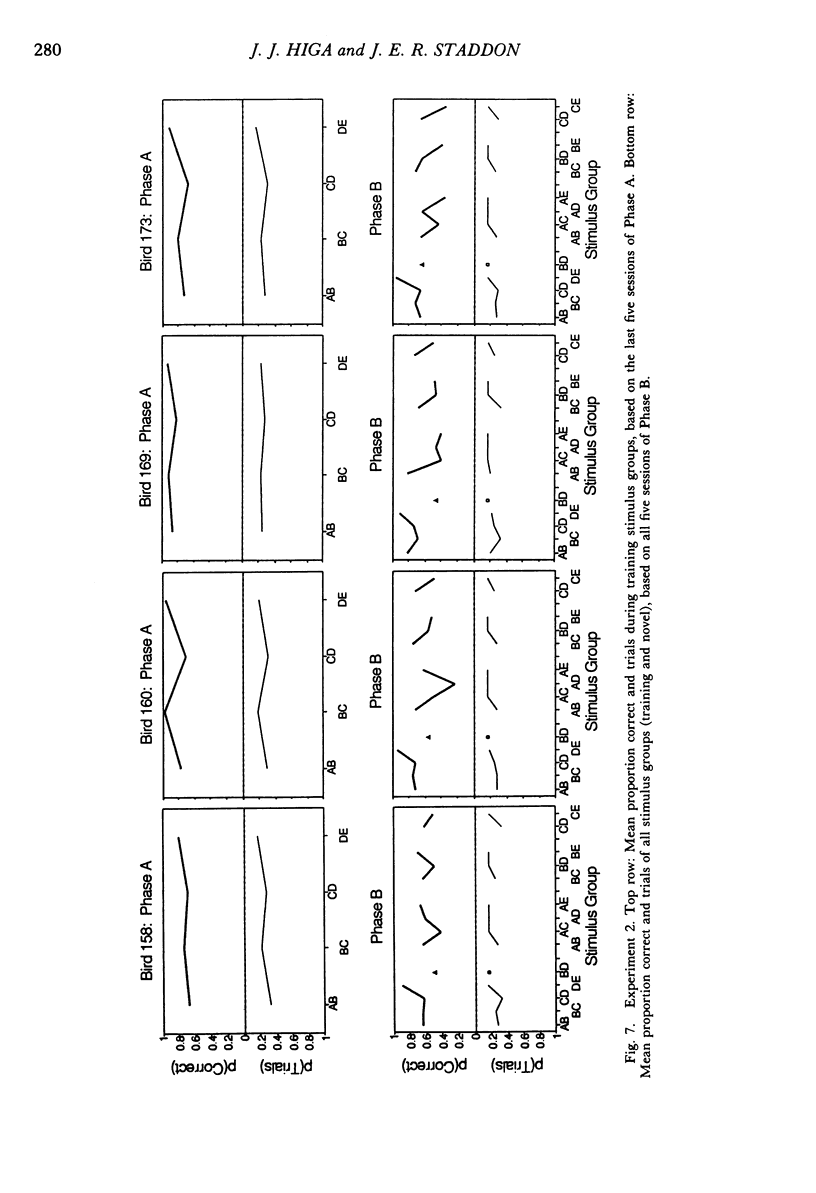
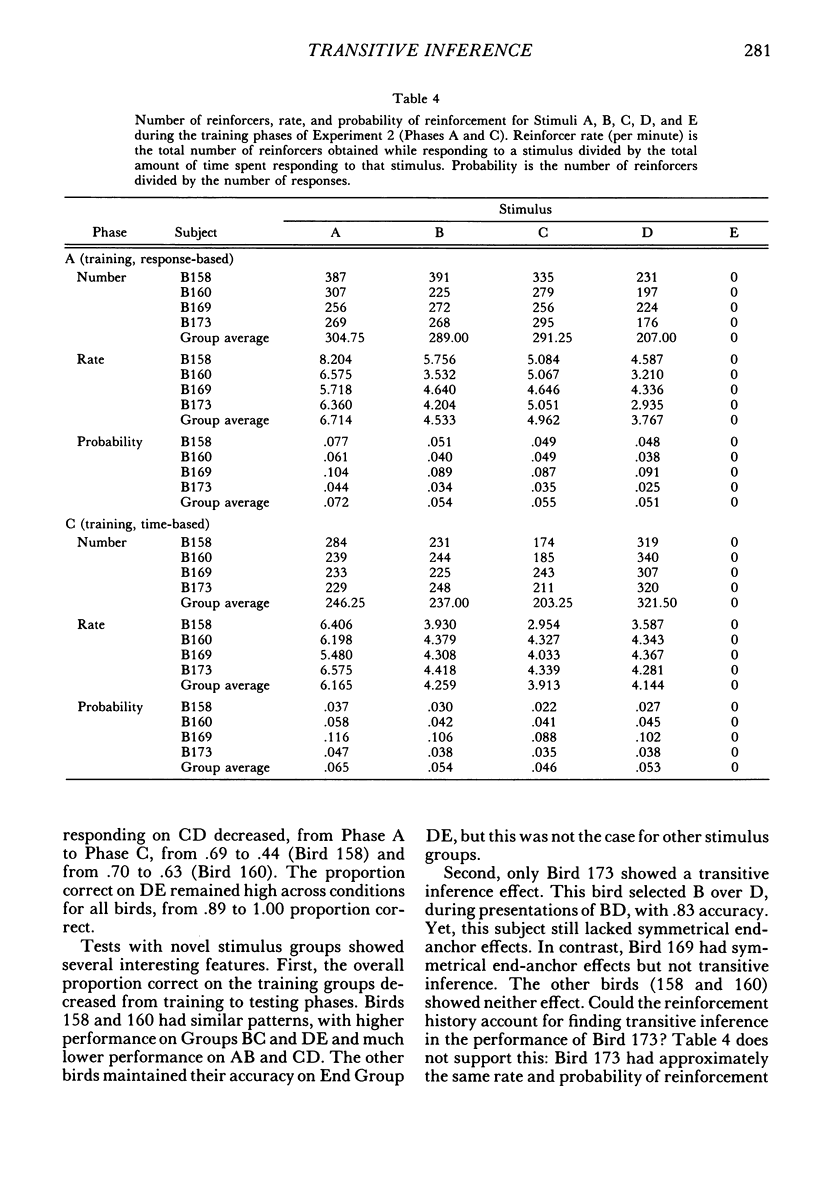
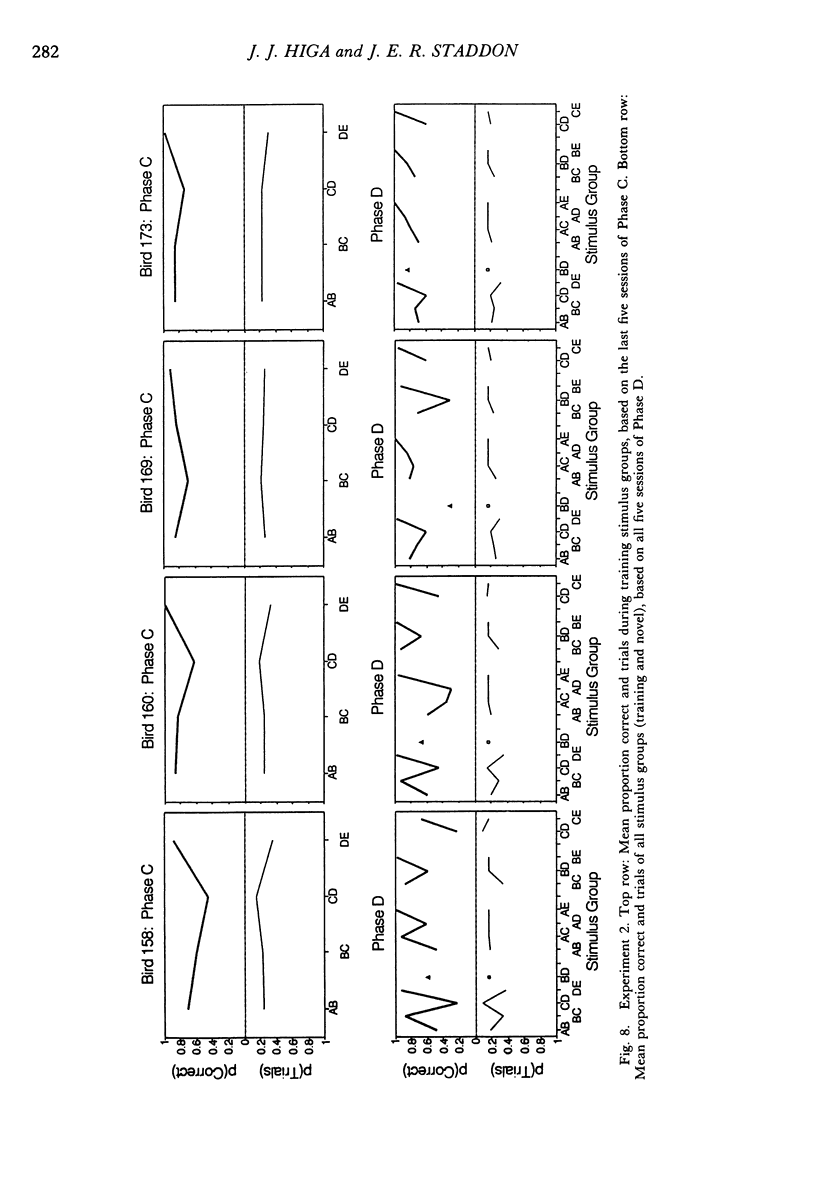
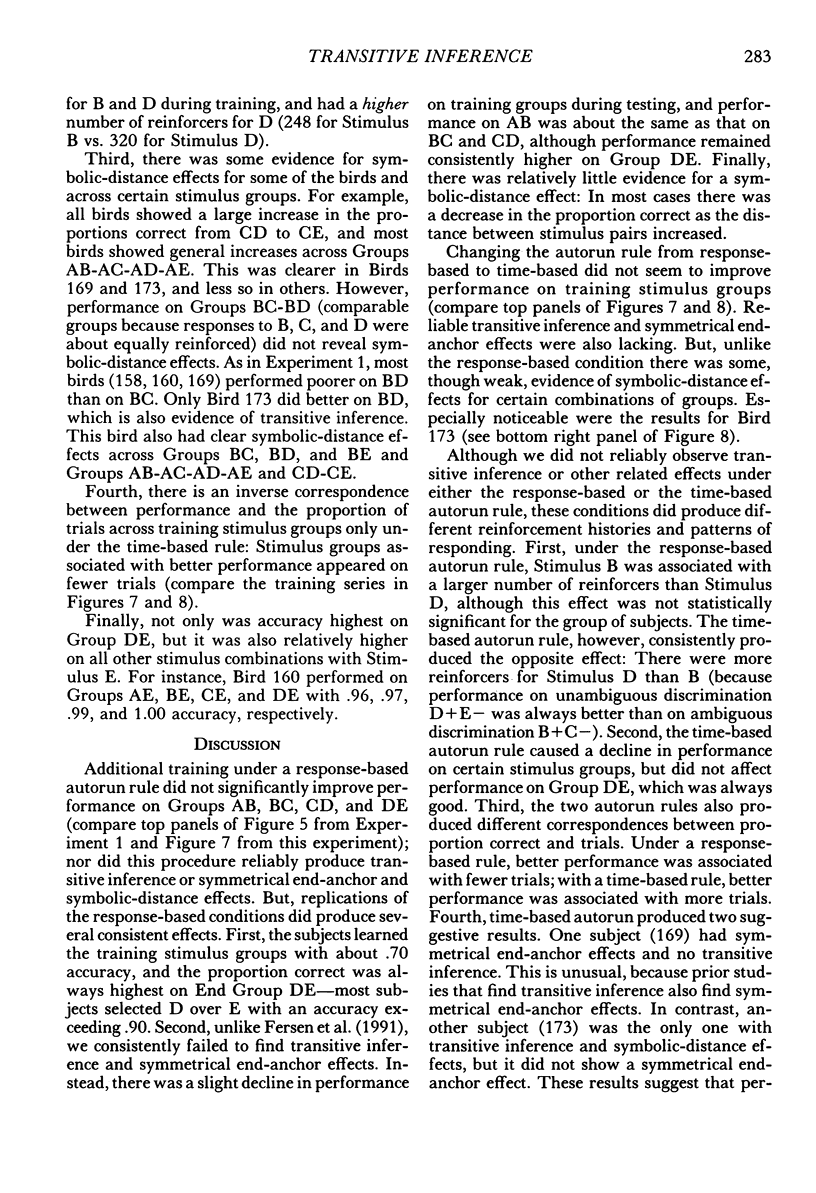
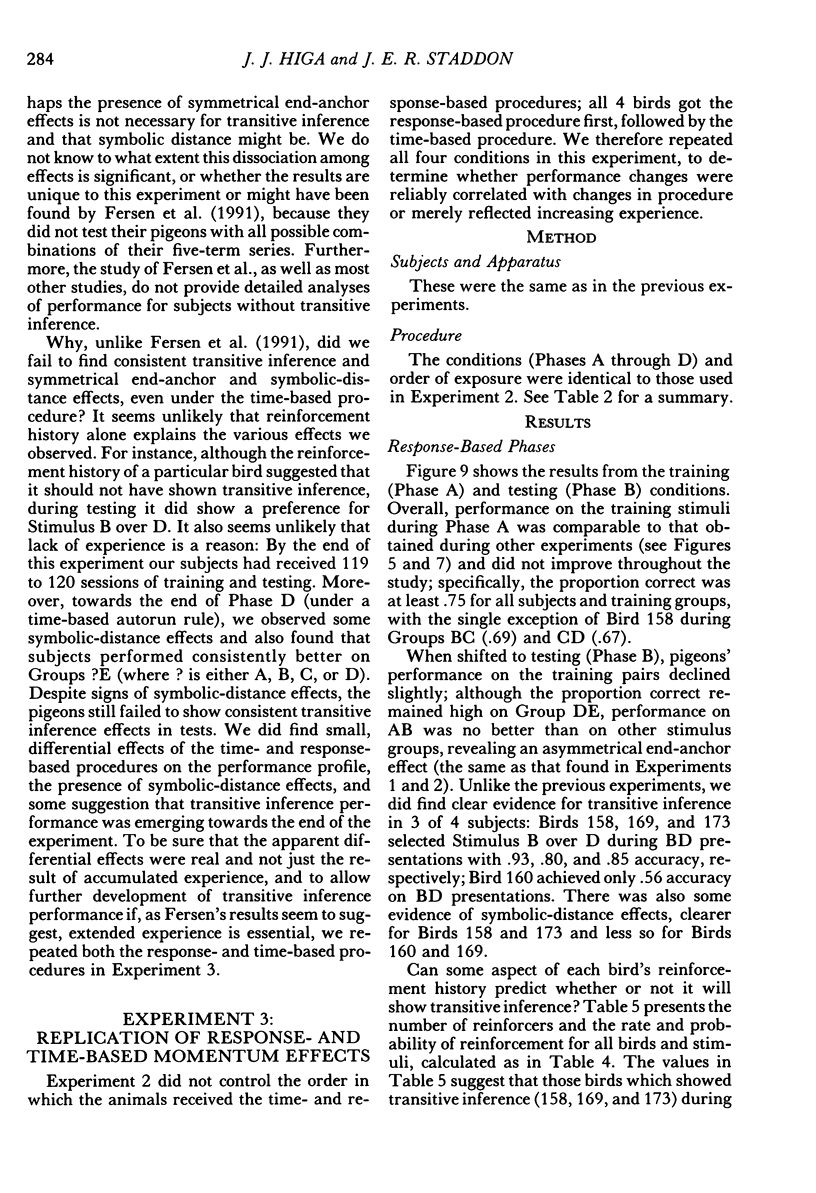
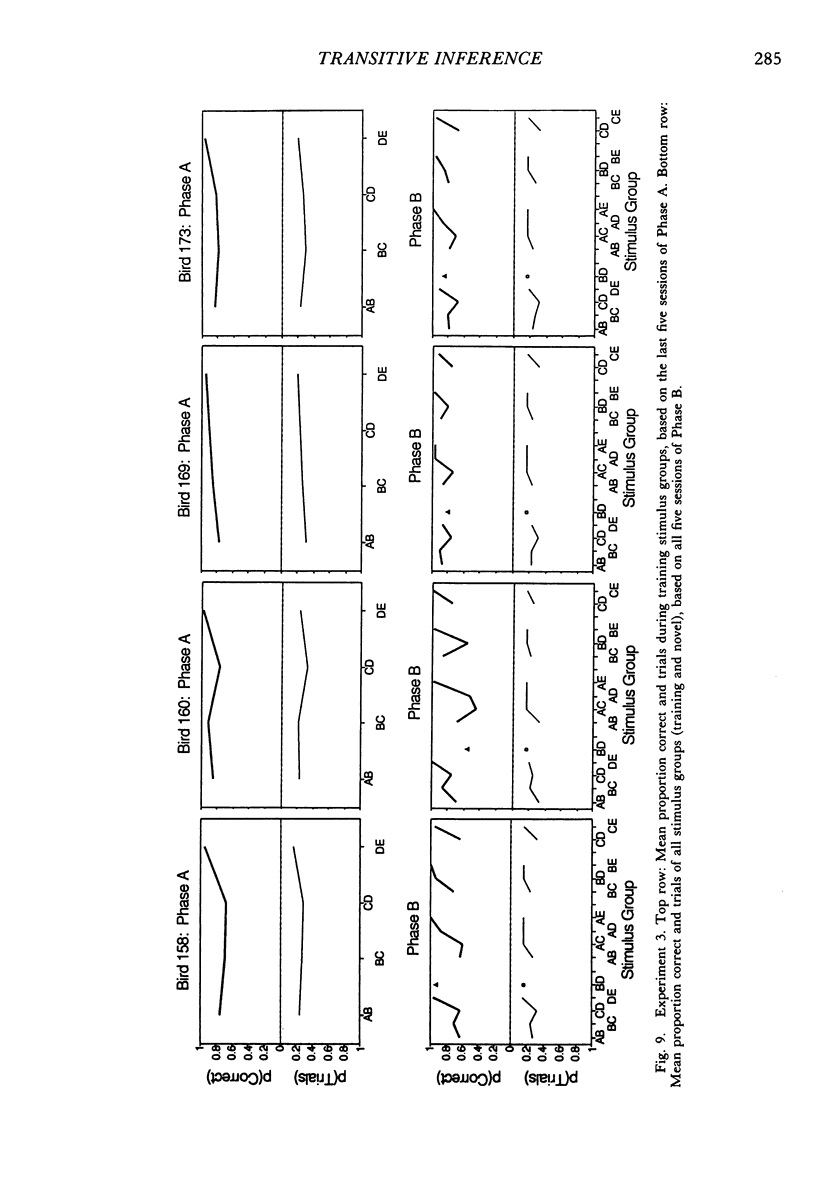

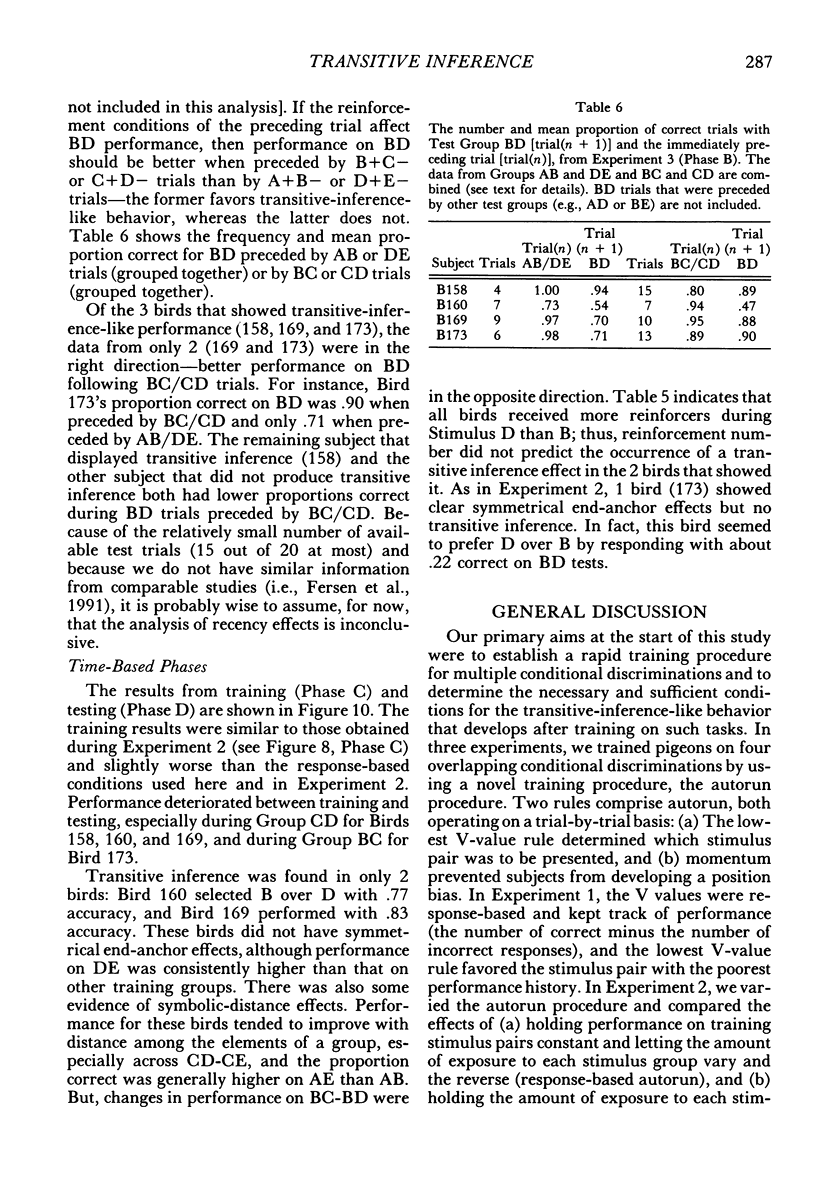
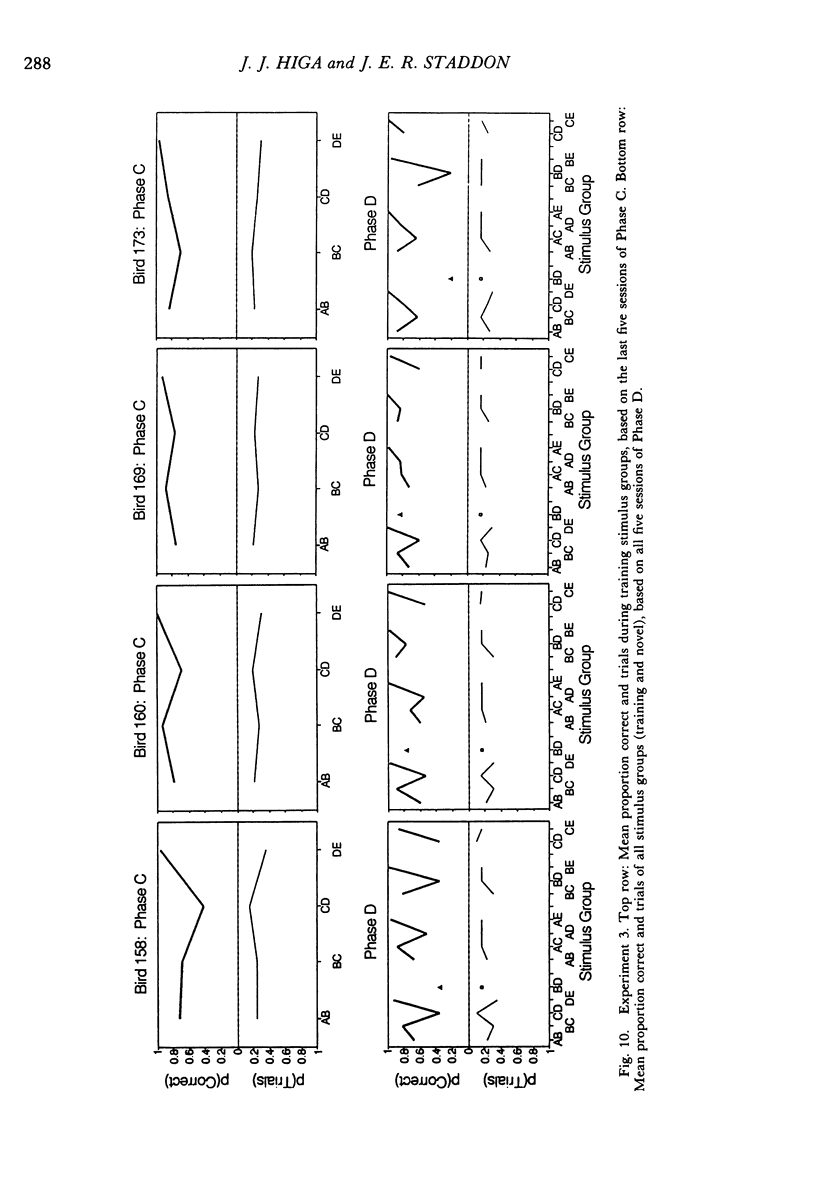

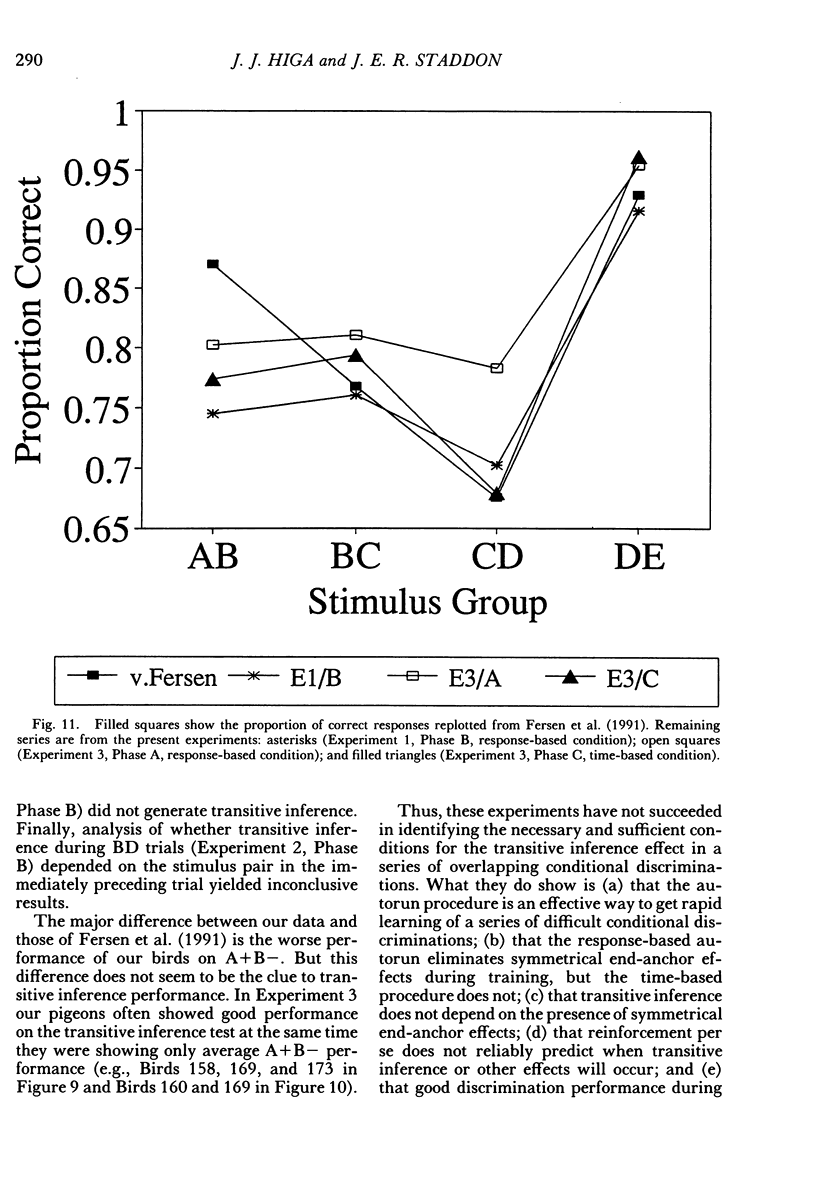
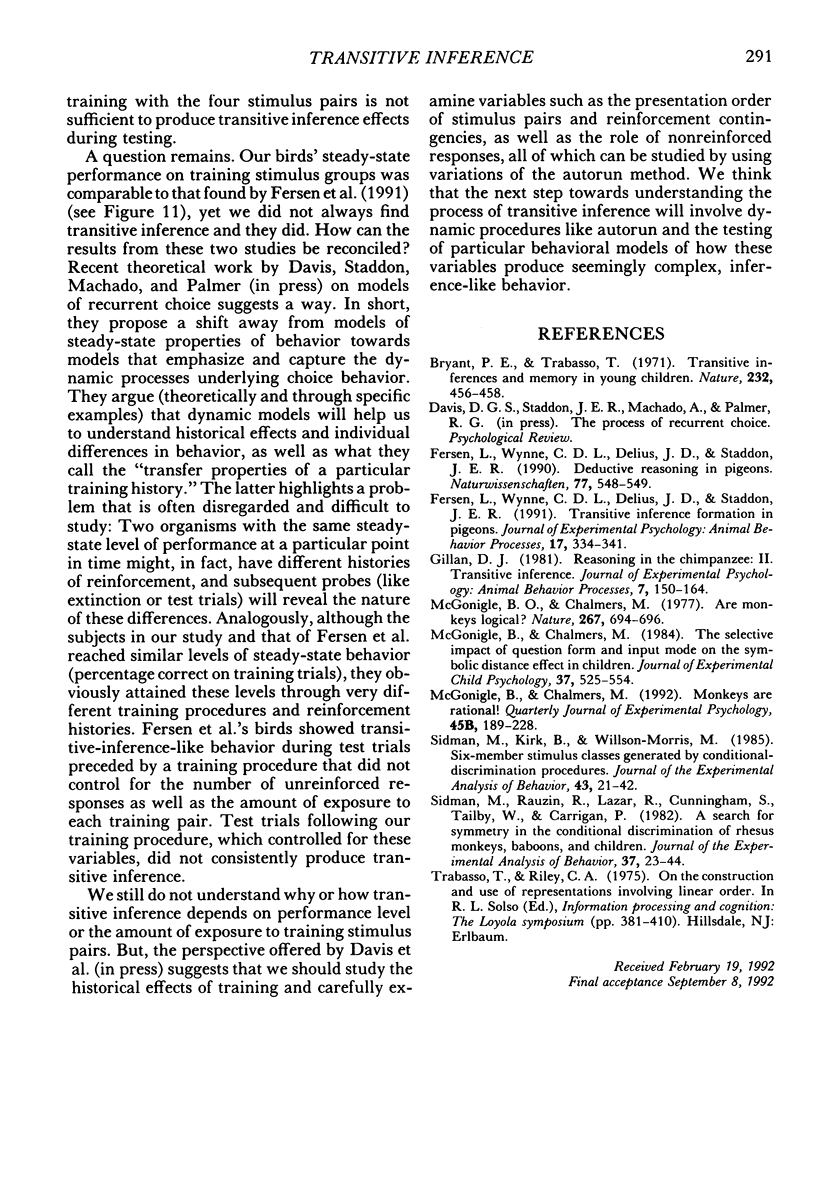
Selected References
These references are in PubMed. This may not be the complete list of references from this article.
- Bryant P. E., Trabasso T. Transitive inferences and memory in young children. Nature. 1971 Aug 13;232(5311):456–458. doi: 10.1038/232456a0. [DOI] [PubMed] [Google Scholar]
- McGonigle B. O., Chalmers M. Are monkeys logical? Nature. 1977 Jun 23;267(5613):694–696. doi: 10.1038/267694a0. [DOI] [PubMed] [Google Scholar]
- McGonigle B., Chalmers M. The selective impact of question form and input mode on the symbolic distance effect in children. J Exp Child Psychol. 1984 Jun;37(3):525–554. doi: 10.1016/0022-0965(84)90075-4. [DOI] [PubMed] [Google Scholar]
- Sidman M., Kirk B., Willson-Morris M. Six-member stimulus classes generated by conditional-discrimination procedures. J Exp Anal Behav. 1985 Jan;43(1):21–42. doi: 10.1901/jeab.1985.43-21. [DOI] [PMC free article] [PubMed] [Google Scholar]
- Sidman M., Rauzin R., Lazar R., Cunningham S., Tailby W., Carrigan P. A search for symmetry in the conditional discriminations of rhesus monkeys, baboons, and children. J Exp Anal Behav. 1982 Jan;37(1):23–44. doi: 10.1901/jeab.1982.37-23. [DOI] [PMC free article] [PubMed] [Google Scholar]
- von Fersen L., Wynne C. D., Delius J. D., Staddon J. E. Deductive reasoning in pigeons. Naturwissenschaften. 1990 Nov;77(11):548–549. doi: 10.1007/BF01139271. [DOI] [PubMed] [Google Scholar]


